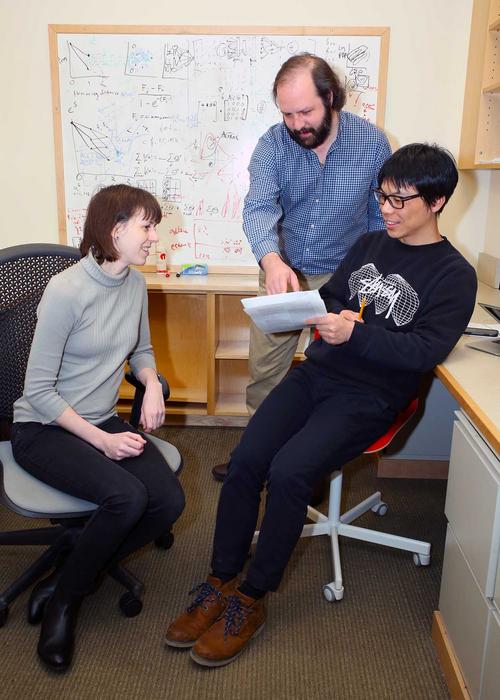In the intricate realm of computational biology, the challenge of interpreting vast genetic data sets demands precise mathematical frameworks that can encapsulate the complexity of biological sequences. Recently, researchers at Cold Spring Harbor Laboratory (CSHL) have unveiled a groundbreaking unified theory that addresses a subtle yet pervasive aspect of these frameworks known as gauge freedoms. This advancement not only sharpens our fundamental understanding of biological models but also promises to accelerate applications spanning agriculture, drug discovery, and beyond.
When building computational models to predict how DNA, RNA, or protein sequences determine biological functions, scientists assign parameters that capture the influences of individual genetic elements and their interactions. However, a pervasive puzzle arises: multiple distinct parameter configurations can yield identical model predictions. This phenomenon reflects what physicists long ago termed gauge freedoms—essentially, different mathematical descriptions that correspond to the same physical reality. While central in quantum physics and electromagnetism, gauge freedoms have only recently been recognized as a ubiquitous feature in biological sequence-function modeling.
The implications of gauge freedoms are profound. Without an explicit accounting for them, researchers risk ambiguous or even misleading interpretations of how specific mutations or combinations of mutations influence biological function. Historically, biological modelers regarded gauge freedoms as inconvenient technical complications to be worked around with ad hoc methods. The new unified approach from the CSHL team, led by Associate Professors Justin Kinney and David McCandlish, represents the first concerted effort to systematically characterize and manage gauge freedoms in biological sequence models.
.adsslot_g0FCZOcGSp{ width:728px !important; height:90px !important; }
@media (max-width:1199px) { .adsslot_g0FCZOcGSp{ width:468px !important; height:60px !important; } }
@media (max-width:767px) { .adsslot_g0FCZOcGSp{ width:320px !important; height:50px !important; } }
ADVERTISEMENT
At its core, the team’s mathematical framework provides direct formulas that “fix” gauge freedoms, thereby enabling unambiguous quantification of the contribution of individual mutations and mutation combinations to a given phenotype or molecular function. By removing the redundancy inherent to gauge freedoms, computational biologists can interpret model parameters with greater confidence and efficiency. This allows for faster analysis cycles and more accurate inference about the biological effects encoded in genetic data.
To appreciate the subtleties involved, consider the analogous situation in theoretical physics where gauge freedoms arise due to symmetries in nature’s fundamental laws. Similarly, in biological systems, the redundancy in parameters maps onto symmetries and invariances in genetic data. This new research elucidates the mathematical origins of these symmetries, revealing that imposing gauge fixing actually necessitates expanding the complexity of models to faithfully capture biological reality while maintaining interpretability. The counterintuitive insight is that simplicity in interpretation demands a more sophisticated underlying mathematical structure.
This theoretical advancement emerges amid the explosion of high-throughput sequencing technologies and massively parallel genetic assays that generate unprecedented volumes of sequence-function data. Until now, computational biologists faced a patchwork of incompatible methods for disentangling and normalizing the effects of gauge freedoms across disparate models. The unified gauge-fixing mathematical machinery unifies these approaches and provides broadly applicable tools that can be integrated into existing modeling pipelines with minimal disruption.
Beyond its theoretical elegance, the practical applications of this work are manifold. In agriculture, for example, understanding how specific genetic variants and their interactions contribute to crop traits can inform breeding strategies to improve yields and resilience. Similarly, in pharmacogenomics and drug discovery, precisely modeling the mutational landscape of targets can uncover vulnerabilities or drug resistance mechanisms. The ability to deconvolve genetic contributions cleanly is a prerequisite for rational design.
Underpinning this progress is an accompanying companion paper by the research team that delves deeper into the biological origins of gauge freedoms. It demonstrates how the intricate symmetries and redundancies innate to biological molecules necessitate the presence of gauge freedoms in computational descriptions. The research program thus connects abstract mathematical physics concepts to tangible biological questions, a testament to the value of interdisciplinary inquiry.
Associate Professor Kinney emphasizes the transformative potential of their findings: “By reframing gauge freedoms not as nuisances but as essential components of biological modeling, our work paves the way for more interpretable and robust computational methods. This will enhance our capacity to decipher the genetic code’s function and evolution.” McCandlish adds, “Our framework ensures that model interpretations truly reflect the biology and are not artifacts of arbitrary parameter choices.”
As biological data continues to grow in volume and complexity, precision in modeling will become even more crucial. The CSHL group’s unified gauge-fixing theory offers a foundational advance that equips scientists with the conceptual clarity and mathematical tools needed to meet this challenge head-on. The ripple effects of this work will influence fields as diverse as synthetic biology, evolutionary genomics, and medical genetics.
Importantly, this innovation also underscores the symbiotic relationship between physics and biology. Concepts such as gauge freedoms, born in the study of fundamental particles and forces, find new life in decoding the language of life encoded within genomes. Such cross-pollination enriches both disciplines and exemplifies the power of theoretical insight to drive empirical progress.
Looking forward, the research team envisions further elaborating these models to incorporate additional layers of biological complexity, such as epigenetic modifications and three-dimensional genome organization. Integrating gauge fixing methods with machine learning algorithms may unlock unprecedented predictive power, ultimately translating into tangible benefits for human health and sustainable agriculture.
In conclusion, by providing a systematic method to navigate and fix gauge freedoms in biological sequence-function models, the Cold Spring Harbor Laboratory researchers have charted a new path toward greater precision and interpretability in computational biology. This achievement resonates far beyond theoretical boundaries, heralding advances that will galvanize innovation across biotechnology and life sciences in the coming years.
Subject of Research: Computational biology, biological sequence-function modeling, gauge freedoms
Article Title: Gauge fixing for sequence-function relationships
Web References: http://dx.doi.org/10.1371/journal.pcbi.1012818
Image Credits: McCandlish lab/CSHL
Keywords: Gauge theories, Computational biology, Biological models, Biophysics, Mutational analysis, Sequence analysis
Tags: advancements in biological modelingagricultural applications of genetic researchbiological sequence-function modelingCold Spring Harbor Laboratory researchcomputational biology frameworksDNA RNA protein interactionsdrug discovery innovationsgauge freedoms in geneticsimplications of gauge freedomsinterpreting genetic data setsmathematical models in biologymodeling biological complexity





